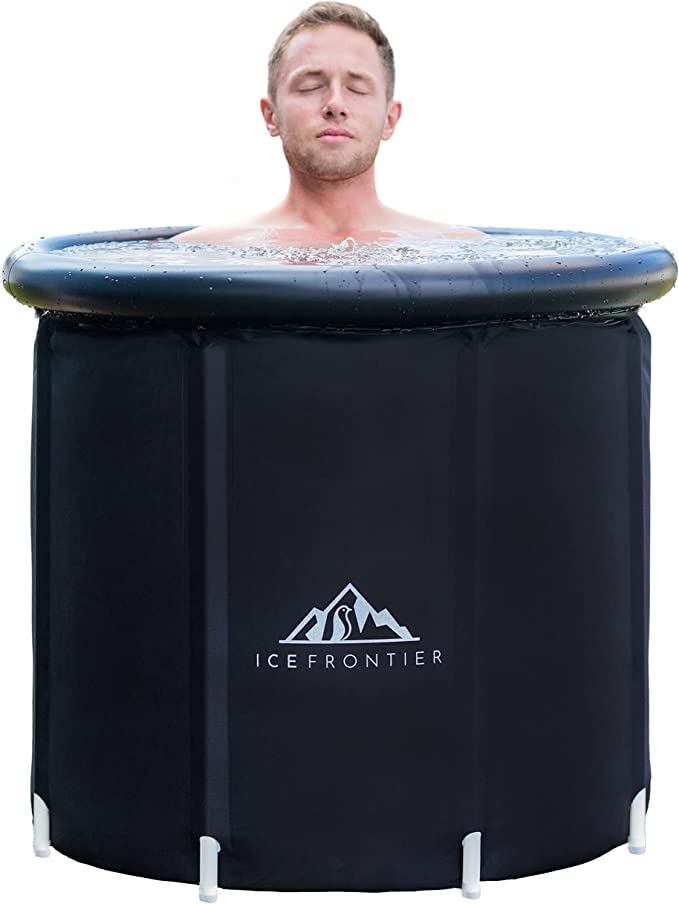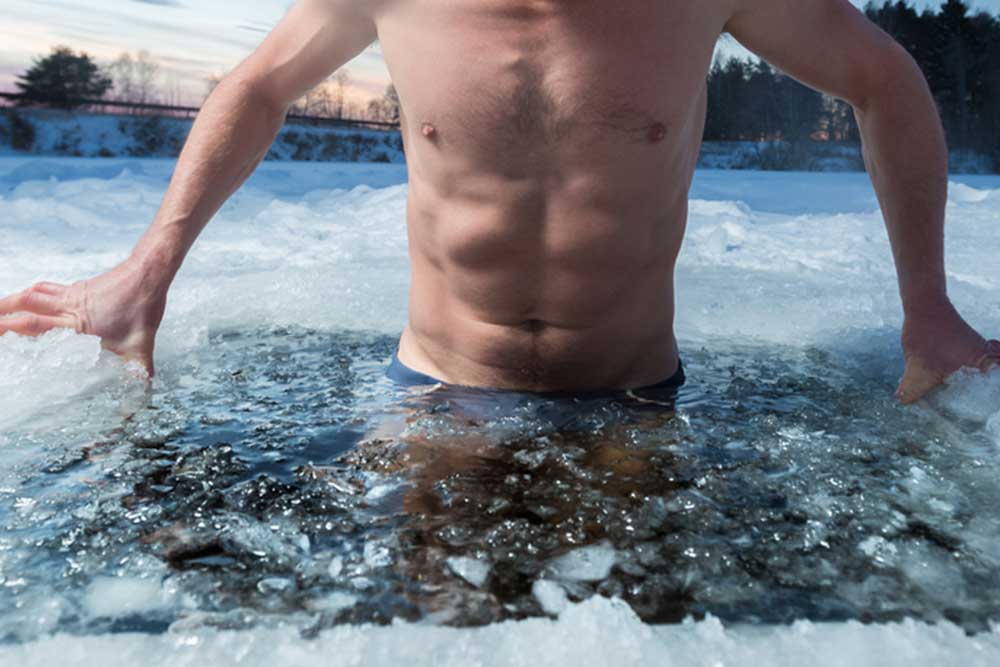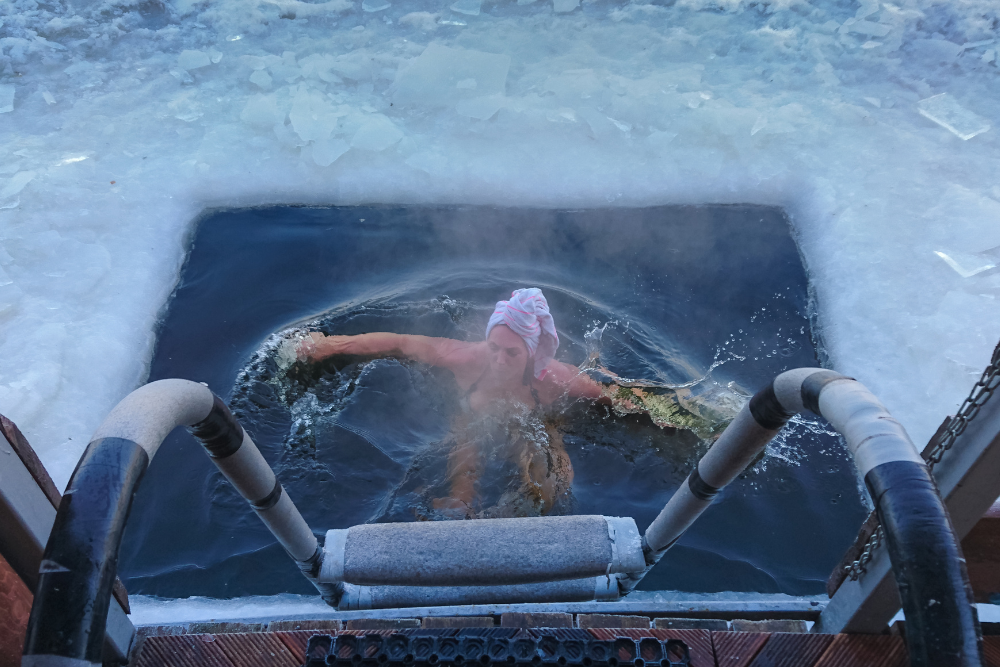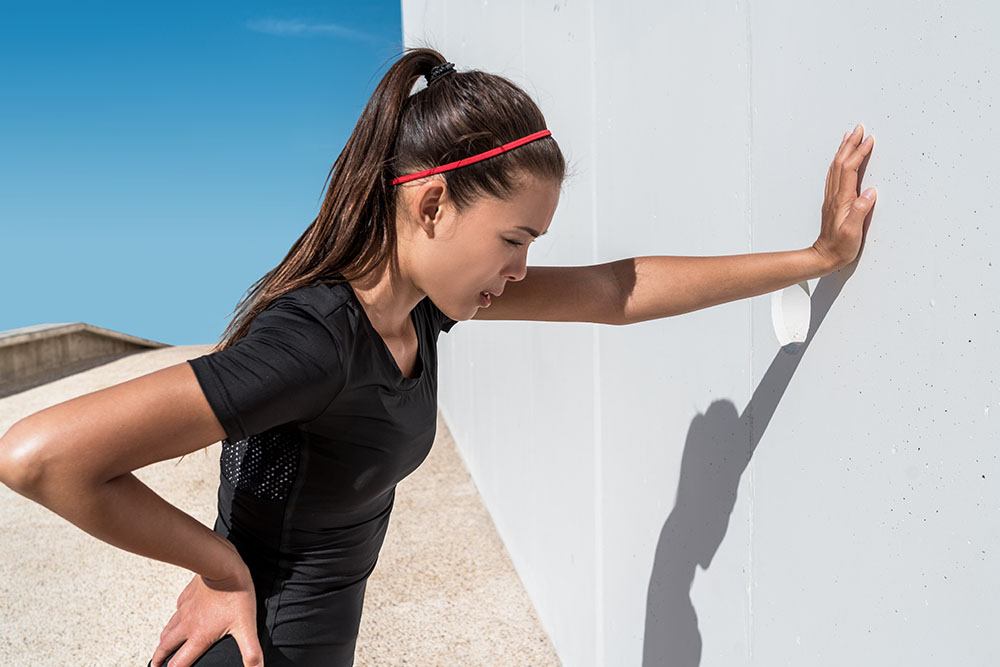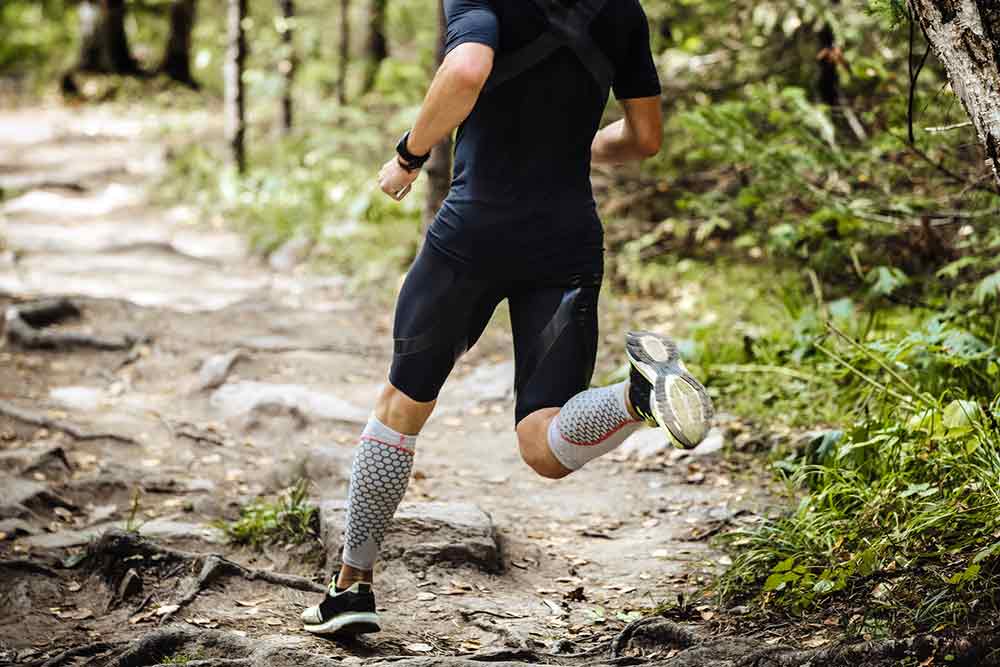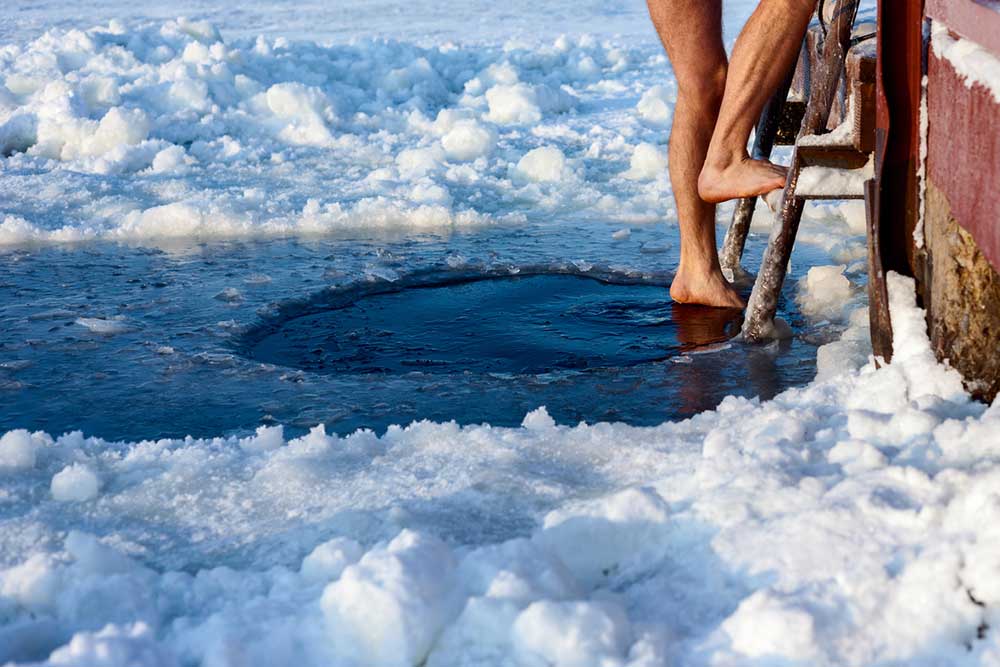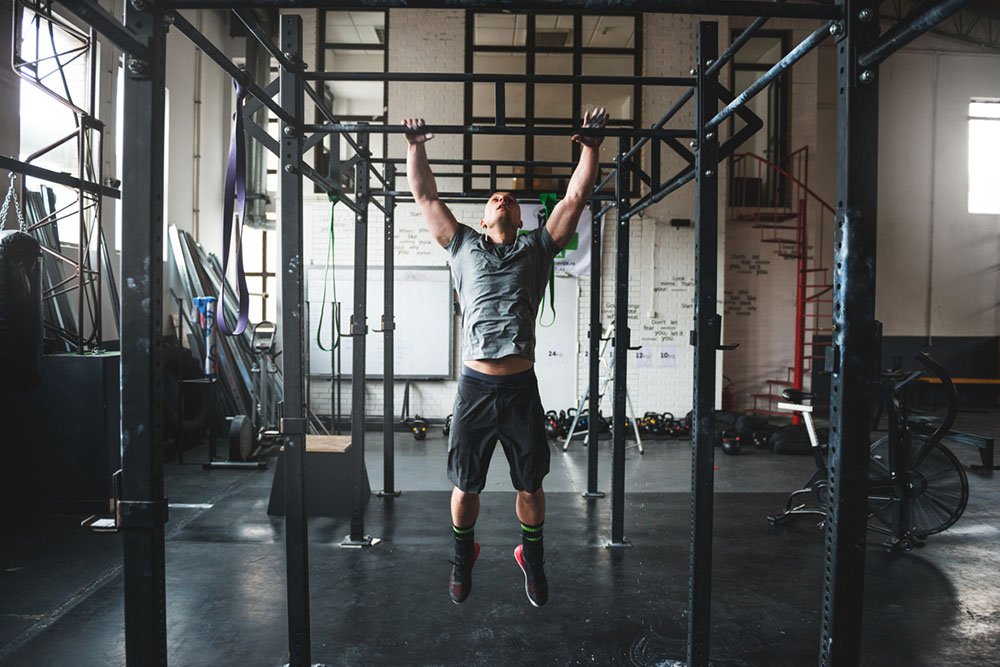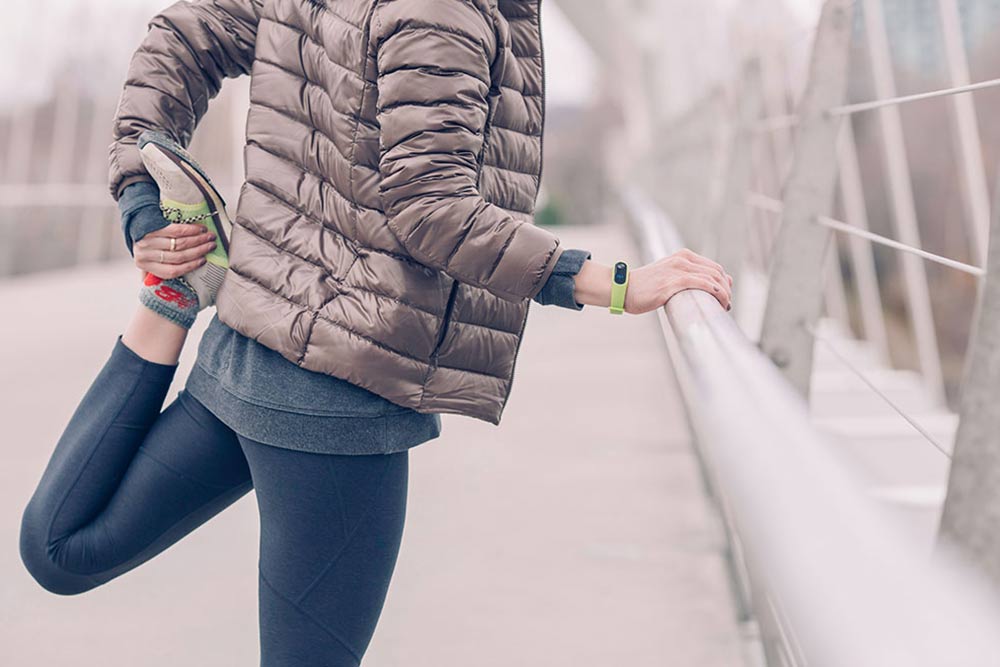The Science of Temperature Therapy

Temperature therapy (also known as “thermal therapy” or “thermotherapy”) involves the use of heat or cold to improve health and function. Interestingly, thermotherapy has been around for centuries, with ancient cultures regularly using hot springs, saunas, cold plunges, and ice baths to improve vitality, strength, and wellbeing. More recently, temperature therapy has gained popularity as a natural way to improve immunity, boost mental health, reduce inflammation, promote recovery after exercise, and even increase lifespan.
But what does the science say?
In this article, we will explore the benefits and potential drawbacks of cold and heat therapy and provide some practical recommendations for incorporating them into your recovery routine.
Cold Therapy: The Benefits and Risks
Cold therapy involves exposing the body to low temperatures, typically below 59°F (15°C). This can be achieved through ice baths, cold showers, or cryotherapy chambers.
The primary benefits of cold therapy include reducing inflammation [1], improving muscle recovery after exercise [2], and boosting immunity [3]. Cold therapy also increases circulation, reduces swelling, and activates the parasympathetic nervous system, leading to a relaxation response, which can have a positive impact on mental health [4] and act to improve sleep quality [5].
One of the main physiological reasons that cold therapy is so effective is because it causes the vasoconstriction of blood vessels, which reduces blood flow to the affected area. This results in a reduction of inflammation and swelling, which can speed up the recovery process. This is particularly important for those who are training for sport performance.
Interestingly, cold therapy also activates brown adipose tissue (BAT), a type of fat that burns calories to generate heat and can improve metabolic health [6]. As such, there is some evidence suggesting that regular cold exposure may contribute to a reduced risk of heart disease and diabetes, ultimately increasing your healthspan [7].
Our Amazon Recommendation: At Home Portable Cold Plunge
However, cold therapy can also have potential risks.
Related Article: 5 Benefits of Sleeping Naked: The Scientific Facts
Potential Risks
Some of the more common ones include hypothermia, frostbite, and nerve damage. Prolonged exposure to cold temperatures can also increase cortisol levels, a hormone associated with stress and inflammation. Lastly, regular exposure to cold therapy around weight training has been shown to blunt adaptation pertaining to muscle strength and size [8]. Therefore, it’s important to follow safe and practical guidelines when practicing cold therapy.
Recommendations for Cold Therapy
Cold therapy appears to be most effective when the water temperature is between 10 and 15 degrees Celsius (50 to 59 degrees farenheit), with a duration of 10 to 15 minutes. While this may not be as cold, or as long, as some people suggest online, this appears to be the optimal dosage for cold therapy.
To experience the benefits of cold therapy while minimising the risk, there are some other practical recommendations you can follow.
Start with short exposures. While the optimal duration of ice baths tends to be around 10-15 minutes, you should begin with cold showers or baths for 30 seconds to one minute at a time, and gradually increase the duration over time. This will help your body adjust to the low temperatures and reduce the risk of shock.
Avoid extreme cold temperatures. The optimal temperature for ice baths is between 10 and 15 degrees Celsius. As such, do not expose your body to temperatures below 50°F (10°C), as this can increase the risk of hypothermia and other adverse effects. It also appears to make the cold exposure less effective.
Listen to your body. Pay attention to how your body feels during and after cold therapy. If you experience discomfort or pain, stop immediately and make an adjustment for next time.
Combine with heat therapy. When it comes to muscle recovery after sport, alternating between hot and cold therapy can enhance the benefits of both, and may even reduce the risk of injury.
Heat Therapy: The Benefits and Risks
As you may have guessed, heat therapy involves exposing the body to high temperatures, typically above 104°F (40°C). This can be achieved through saunas, hot baths, steam showers, or infrared therapy.
The primary benefits of heat therapy include reducing stress, promoting relaxation, and improving mental health [9], while also boosting cardiovascular health and reducing your risk of cardiovascular disease [10].
One of the main physiological causes of the benefits of heat therapy is vasodilation, which increases blood flow to the affected area. This can reduce inflammation, promote healing, and improve circulation. Heat therapy also activates heat shock proteins, which can protect cells from damage, improve cellular function, and has even been proposed to increase your healthspan [11].
It is due to these mechanisms that regular heat therapy has been shown to improve cardiovascular health. In fact, regular exposure to heat has been associated with improvements in blood pressure, heart rate, and blood vessel function [12].
However, heat therapy can also have potential risks.
Potential Risks
Some of the most common ones are dehydration, heat exhaustion, and burns. Prolonged exposure to high temperatures can also increase the risk of oxidative stress, which can damage cells and contribute to chronic disease. Therefore, it’s important to follow safe and practical guidelines when practicing heat therapy.
Recommendations for Heat Therapy
The optimal application of heat therapy appears to involve a duration of 20-30 minutes at a time, 2-3 times per week. If the heat therapy is provided via a direct heat source such as water (i.e., hot showers, and hot baths), then it should sit somewhere between 40 and 49 degrees Celsius (104-120 degrees Fahrenheit). Conversely, if it is being applied through sauna, the temperature should sit between 70 and 80 degrees Celsius (158-176 degrees Fahrenheit).
To experience the benefits of heat therapy without increasing risk, there are some other practical recommendations to follow:
Stay hydrated. Drink plenty of water before and after heat therapy to prevent dehydration.
Avoid extreme temperatures. Do not expose your body extreme temperatures as this can increase the risk of burns and heat exhaustion. For general heat therapy, where something hot is against the skin, you should not exceed 49 degrees Celsius. Conversely, if you are using a sauna, temperatures should not exceed 80 degrees Celsius to reduce the risk of heat-related injuries.
Limit the duration. Start with 10–15-minute sessions and gradually increase the duration over time. Optimal benefits from heat exposure (particularly sauna) seem to max out after around 30 minutes, so there is no need to exceed this.
Listen to your body. Pay attention to how your body feels during and after heat therapy. If you experience dizziness, nausea, or other symptoms of heat exhaustion, stop immediately.
Combining Cold and Heat Therapy for Optimal Benefits
While both cold and heat therapy have unique benefits, combining them can lead to even greater improvements in muscle recovery, and offers a great option for athletes, and those individuals who enjoy pushing themselves hard during physical pursuits.
Alternating between hot and cold therapy is a practice known as “contrast therapy,” and it can enhance circulation, reduce inflammation, and improve recovery after exercise [13]. This approach involves alternating between 1-3 minutes of cold therapy and 3-5 minutes of heat therapy for several cycles.
For example, you can start with a 2-minute ice bath followed by a 10-minute sauna session, then repeat this cycle 3-5 times. This can improve circulation, reduce muscle soreness, and promote relaxation.
However, it’s important to start with short exposures and gradually increase the duration over time, much like the recommendations outlined above.
Take Home Message
In conclusion, temperature therapy is a natural and effective way to improve physical and mental health.
Cold therapy can reduce inflammation, improve recovery, and boost immunity, while heat therapy can reduce stress, improve cardiovascular health, and promote relaxation. And combining them may be optimal for post exercise recovery.
By following safe and practical guidelines, you can incorporate thermotherapy into your routine and reap the rewards.
References:
Zwaag, Jelle, et al. “The effects of cold exposure training and a breathing exercise on the inflammatory response in humans: A pilot study.” Psychosomatic Medicine 84.4 (2022): 457.
Moore, Emma, et al. “Impact of cold-water immersion compared with passive recovery following a single bout of strenuous exercise on athletic performance in physically active participants: a systematic review with meta-analysis and meta-regression.” Sports Medicine 52.7 (2022): 1667-1688.
Buijze, Geert A., et al. “The effect of cold showering on health and work: a randomized controlled trial.” PloS one 11.9 (2016): e0161749.
Rymaszewska, Joanna, David Ramsey, and Sylwia Chładzińska-Kiejna. “Whole-body cryotherapy as adjunct treatment of depressive and anxiety disorders.” Archivum immunologiae et therapiae experimentalis 56 (2008): 63-68.
Qu, Chaoyi, et al. “Cryotherapy on Subjective Sleep Quality, Muscle, and Inflammatory Response in Chinese Middle-and Long-Distance Runners After Muscle Damage.” Journal of Strength and Conditioning Research 36.10 (2022): 2883-2890.
Peres Valgas da Silva, Carmem, et al. “Cold and exercise: therapeutic tools to activate brown adipose tissue and combat obesity.” Biology 8.1 (2019): 9.
Ivanova, Yoanna M., and Denis P. Blondin. “Examining the benefits of cold exposure as a therapeutic strategy for obesity and type 2 diabetes.” Journal of Applied Physiology 130.5 (2021): 1448-1459.
Roberts, Llion A., et al. “Post‐exercise cold water immersion attenuates acute anabolic signalling and long‐term adaptations in muscle to strength training.” The Journal of physiology 593.18 (2015): 4285-4301.
Laukkanen, Tanjaniina, Jari A. Laukkanen, and Setor K. Kunutsor. “Sauna bathing and risk of psychotic disorders: a prospective cohort study.” Medical Principles and Practice 27.6 (2019): 562-569.
Henderson, Kaemmer N., et al. “The cardiometabolic health benefits of sauna exposure in individuals with high-stress occupations. A mechanistic review.” International journal of environmental research and public health 18.3 (2021): 1105.
Patrick, Rhonda P., and Teresa L. Johnson. “Sauna use as a lifestyle practice to extend healthspan.” Experimental gerontology 154 (2021): 111509.
Laukkanen, Tanjaniina, et al. “Sauna bathing is associated with reduced cardiovascular mortality and improves risk prediction in men and women: a prospective cohort study.” BMC medicine 16.1 (2018): 1-14.
Bieuzen, Francois, Chris M. Bleakley, and Joseph Thomas Costello. “Contrast water therapy and exercise induced muscle damage: a systematic review and meta-analysis.” PloS one 8.4 (2013): e62356.
You Might Like:


